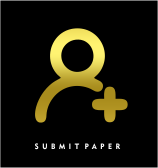Cinematherapy Techniques: Guidance Effectiveness Increases Student Achievement Motives
Abstract
This study aimed to establish the guidance with applied cinematherapy technique to increase achievement motivation at grade VIII. This research based on empirically study that more than 75% of students have low achievement motivation which has required guidance and counseling services to increase. This researchused quasiekperimental nonequivalen control group design. Study participantswere 35 students each in experimental and control group. Data was collected by instruments achievement motivationwith pair comparison and statistically processed through ANACOVA techniques. The results showed that guidance with applied cinematherapy technique used six films, namely Laskar Pelangi, Sang Pemimpi, Semesta Mendukung (Mestakung), Sang Pencerah, Negeri Lima Menara, dan Cahaya dari Timur (Beta Maluku) were effective increasing total score achievement motivation of the students. Specifically, there were four of ten aspects increase students achievement motivation, namely a negative reaction to failure, anxiety against the possibility of failure to achieve a goal, assistance or sympathetic to people who encourage and help direct individuals activities , and positive reaction to result achievement. Six aspects of the achievement motivation were not significantly affected by guidance with applied cinematherapy technique namely need to obtain the best results, anticipation of the goals to be achieved, efforts to result achievement, externalbarriers, internal barriers and the intensity of the desire to achieve best result.
KKeywords
Full Text:
PDFReferences
Abesha A. Gota. 1968. “Effects of Parenting Styles, Academic Self-Efficacy, and Effects of Parenting Styles, Academic Self-Efficacy, and Achievement Motivation on the Academic Achievement of Achievement Motivation on the Academic Achievement of University Students in Ethiopia U.” Edith Cowan University.
Ardayati, Ardayati. 2018. “Film as A Media Used by Teachers to Teach Writing for Tertiary Level Students.” Linguistic, English Education and Art (LEEA) Journal 1(2):180–92. doi: 10.31539/leea.v1i2.186.
Arikunto, Suharsim. 1998. Prosuder Penelitian Suatu Pendekatan Praktek. jakarta: PT. Rineka Cipta.
Bosma, Peter. 2016. Film Programming: Curating for Cinemas, Festivals, Archives. Vol. 36.
Dermer, Shannon B., and Jennifer B. Hutchings. 2000. “Utilizing Movies in Family Therapy: Applications for Individuals, Couples, and Families.” American Journal of Family Therapy 28(2):163–80. doi: 10.1080/019261800261734.
Egeci, Sine, Ilke. 2010. “UTILIZING CINEMATHERAPY TO IMPROVE RELATIONSHIP SATISFACTION: A QUALITATIVE STUDY.” Middle East Technical University.
Haines et al, 2019, Annie goleman, daniel; boyatzis, Richard; Mckee, 2019 Haines et al, Annie goleman, daniel; boyatzis, Richard; Mckee, 2019 Haines et al, and Annie goleman, daniel; boyatzis, Richard; Mckee. 2019. “Persepsi Psikologi Umum.” Journal of Chemical Information and Modeling 53(9):1689–99.
Kahn, Paul W. 2016. “Finding Our?Elve? At the Movie?: Philo?Oph? For a New Generation.” Cineaste Magazine, 1–7.
Laka, Beatus Mendelson, Jemmi Burdam, and Elizabet Kafiar. 2020. “Role of Parents in Improving Geography Learning Motivation in Immanuel Agung Samofa High School.” Jurnal Inovasi Penelitian 1(2):69–74. doi: 10.47492/jip.v1i2.51.
Nafsika, Salsa Solli. 2020. “Analisis Kesulitan Dalam Perkuliahan Gambar Konstruktif.” 2:31–35.
Nafsika, Salsa Solli, and Zakarias S. Soeteja. 2021. “Learning Innovation of Constructive Drawing in One Point Perspective Subject.” 519(Icade 2020):174–80. doi: 10.2991/assehr.k.210203.037.
Pauhrizi, Erik Muhammad. 2020. “Merancang Treatment Film ‘ Sang Seniman ’ Melalui Paradigma Estetika ( Aesthesis ) Dekolonial.” Irama 2(1):1–12.
Ratna, N. K. 2016. Metode Penelitian. Yogyakarta: Pustaka Pelajar.
Rybnicek, Robert, Sabine Bergner, and Alfred Gutschelhofer. 2019. How Individual Needs Influence Motivation Effects: A Neuroscientific Study on McClelland’s Need Theory. Vol. 13. Springer Berlin Heidelberg.
Supiarza, Hery. 2022. “Fungsi Musik Di Dalam Film : Pertemuan Seni Visual Dan Aural Functions of Music in Film : The Meeting of Visual and Aural Arts.” Cinematology: Journal Anthology of Film and Television Studies 2(1):78–87.
Thifalia, Naurah, and Santi Susanti. 2021. “Produksi Konten Visual Dan Audiovisual Media Sosial Lembaga Sensor Film.” Jurnal Common 5(1):39–55. doi: 10.34010/common.v5i1.4799.
Utami, Khurnia, and Julianto. 2019. “Penggunaan Media Audio Visual Untuk Meningkatkan Pemahaman Konsep.” Jpgsd 02(02):76–81.
Vicente, Alejandro, María Teresa, and Díaz Mohedo. 2014. “Creativity In The Music Classroom.” Procedia - Social and Behavioral Sciences 141:237–41. doi: 10.1016/j.sbspro.2014.05.041.
Wolz, Birgit. 1976. “Cinema Therapy.” School Counselor 24(1):39–42.
Yasri, Hayyun Lathifaty, and Endang Mulyani. 2016. “Efektivitas Penggunaan Media Film Untuk Meningkatkan Minat Belajar.” Jurnal Pendidikan IPS 3(1):138–49.
DOI: https://doi.org/10.17509/ftv-upi.v3i1.55550
Copyright (c) 2023 Universitas Pendidikan Indonesia

This work is licensed under a Creative Commons Attribution-ShareAlike 4.0 International License.
P-ISSN 2797-7099
E-ISSN 2797-9903
Address:
Program Studi Film Dan Televisi, Fakultas Pendidikan Seni Dan Desain, Universitas Pendidikan Indonesia. Gedung FPSD - Jl. Dr. Setiabudi No.229, Isola, Kec. Sukasari, Kota Bandung, Jawa Barat 40154, Bandung, Provinsi Jawa Barat. (022)200-9198. ftv_fpsd@upi.edu

Cinematology: Journal Antology of film and television studies is licensed under a Creative Commons Attribution-ShareAlike 4.0 International License




















